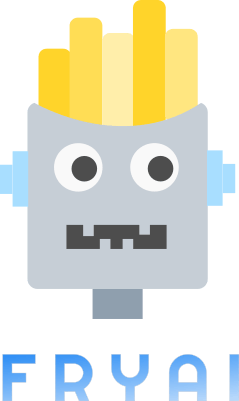- FryAI
- Posts
- Easily learn about anything...
Easily learn about anything...

Good morning, and happy Wednesday! Whether you get your coffee hot or iced, take that first sip and start scrolling. ☕️
🤯 MYSTERY AI LINK 🤯
(The mystery link can lead to ANYTHING AI-related: tools, memes, articles, videos, and more…)
Today’s Menu
Appetizer: Google introduces educational AI model 📚
Entrée: DeepMind’s huge release for medicine 💊
Dessert: Getty releases new AI image feature 📸
🔨 AI TOOLS OF THE DAY
💞 Date Planner: Have AI help you plan the perfect date. → Check it out
📑 PandaETL: Automate your document workflows. → Check it out
🗞️ Feedly: Create a personalized news feed tailored to your interests. → Check it out
GOOGLE INTRODUCES EDUCATIONAL AI MODEL 📚
Q: Why don’t scientists trust atoms?
A: Because they make up everything! ⚛️
What’s new? Google has introduced Learn About, an experimental AI tool designed to be more educational than an average chatbot.
How does it work? Built on Google’s LearnLM model, Learn About aims to make learning interactive and engaging. Google stated that the model is “grounded in educational research and tailored to how people learn.” Unlike chatbots like Gemini or ChatGPT, Learn About delivers answers with visual aids and tools tailored for deeper understanding. For example, when asked, “How big is the universe?”, Learn About provided a detailed response featuring an educational image from Physics Forums, additional learning prompts, and textbook-style features like vocabulary definitions and “why it matters” boxes. Learn About also incorporates a touch of humor into its responses, making learning more fun.
Why is this important? AI’s use in education has been a hot topic of discussion since the release of ChatGPT two years ago. Students have been using AI to write essays and do their homework, and schools are restricting AI use across the country. As a result, AI’s uses in education are being painted in a negative light. However, this release by Google reveals a new way that AI can be used productively in learning, helping users to dive deeper into material and find resources for further exploration. It’s likely that as AI use becomes more common, educational institutions will find ways to leverage the positive uses for AI in the classroom.
DEEPMIND’S HUGE RELEASE FOR MEDICINE 💊
Patient: Doctor, I get heartburn every time I eat birthday cake.
Doctor: Next time, take off the candles. 🎂
What happened? Google DeepMind has open-sourced AlphaFold 3, its Nobel Prize-winning AI protein prediction model, granting academic researchers free access to its code and training weights.
What is AlphaFold 3? Previously available only in a limited release, AlphaFold 3 can predict how proteins interact with molecules like DNA, RNA, and drug compounds. The model has already mapped over 200 million protein structures, setting a new benchmark in structural biology.
Why is this significant? AlphaFold 3’s open access is a game-changer for science. By enabling researchers worldwide to study protein interactions at an unprecedented scale, it removes barriers for those outside large institutions or big pharma. This democratization of cutting-edge AI promises to accelerate breakthroughs in biology and medicine, shaping the future of healthcare and drug discovery.
GETTY RELEASES NEW AI IMAGE FEATURE 📸
I had to give up my career as a photographer. I kept losing my focus. 👁️
What’s new? Getty Images has introduced a new feature allowing users to upload product and reference images to create AI visuals.
How does it work? Available on Generative AI by Getty Images and Generative AI by iStock, this feature puts AI capabilities in the hands of creatives. For example, users can integrate product photos into AI-generated backgrounds or use reference images to guide outputs with specific colors, patterns, or textures.
What about copyright? These new tools rely on Nvidia’s Edify platform, trained exclusively on Getty’s licensed image database, ensuring commercial use rights. Unlike some AI models that face legal challenges for using unlicensed data, Getty’s approach prioritizes copyright compliance. Grant Farhall, Getty’s Head of Product, emphasizes the importance of a clean, licensed training dataset: “Our model respects intellectual property rights, avoiding issues like including trademarks or identifiable individuals.”
“WATCH THIS” WEDNESDAY 👀
If you aren’t wearing AI, you are falling behind! This video breaks down the top 5 AI smartwatches:
HAS AI REACHED SINGULARITY? CHECK OUT THE FRY METER BELOW:
What do ya think of this latest newsletter? |


